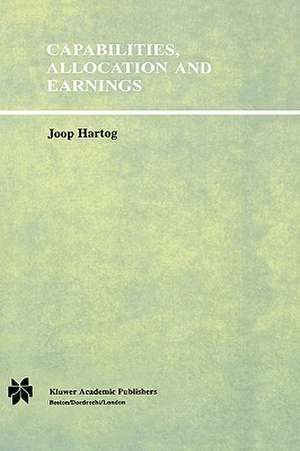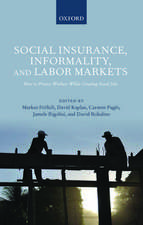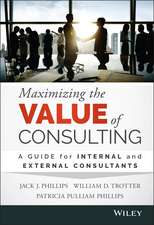Capabilities, Allocation and Earnings
Autor Joop Hartogen Limba Engleză Hardback – 29 feb 1992
| Toate formatele și edițiile | Preț | Express |
|---|---|---|
| Paperback (1) | 642.51 lei 6-8 săpt. | |
| SPRINGER NETHERLANDS – 9 oct 2012 | 642.51 lei 6-8 săpt. | |
| Hardback (1) | 648.89 lei 6-8 săpt. | |
| SPRINGER NETHERLANDS – 29 feb 1992 | 648.89 lei 6-8 săpt. |
Preț: 648.89 lei
Preț vechi: 763.40 lei
-15% Nou
Puncte Express: 973
Preț estimativ în valută:
124.17€ • 132.78$ • 103.53£
124.17€ • 132.78$ • 103.53£
Carte tipărită la comandă
Livrare economică 18 aprilie-02 mai
Preluare comenzi: 021 569.72.76
Specificații
ISBN-13: 9780792391739
ISBN-10: 079239173X
Pagini: 324
Ilustrații: XII, 324 p.
Dimensiuni: 155 x 235 x 21 mm
Greutate: 0.65 kg
Ediția:1992
Editura: SPRINGER NETHERLANDS
Colecția Springer
Locul publicării:Dordrecht, Netherlands
ISBN-10: 079239173X
Pagini: 324
Ilustrații: XII, 324 p.
Dimensiuni: 155 x 235 x 21 mm
Greutate: 0.65 kg
Ediția:1992
Editura: SPRINGER NETHERLANDS
Colecția Springer
Locul publicării:Dordrecht, Netherlands
Public țintă
ResearchCuprins
1 Introduction.- 1.1 Introduction.- 1.2 Key concepts used.- 1.3 Organization of the book.- 2 Labor Demand.- 2.1 Introduction.- 2.2 The long run: designing the job structure.- 2.3 The ABC of labor division: Adam Smith, Charles Babbage and John Commons.- 2.4 Working conditions.- 2.5 Labor demand in the short run.- 2.6 Concluding remarks.- 3 Schooling and Supply.- 3.1 Introduction.- 3.2 Short run labor supply.- 3.3 Schooling in the smooth labor market.- 3.4 Schooling with constraints.- 3.5 Utility maximization.- 3.6 Conclusions.- 4 Equilibrium and Optimum.- 4.1 Introduction.- 4.2 The Lucas-Rosen model.- 4.3 The Tinbergen model.- 4.4 Comparative advantage.- 4.5 Optimal provision of job characteristics.- 4.6 Optimal schooling provisions.- 4.7 Conclusions.- Appendix 4.1.: Derivatives of the Tinbergen model.- 5 Implications for Empirical Work.- 5.1 Introduction.- 5.2 Implications and predictions.- 5.3 Econometric models of selfselection.- 5.4 Estimating structural models.- 5.5 The Datasets.- 5.6 Concluding remarks.- Appendix 5.1 The Brabant data.- Appendix 5.2 The ARBI job level scale.- Appendix 5.3 The CBS job level scale.- 6 Allocation.- 6.1 Introduction.- 6.2 Multinomial logit models for allocation.- 6.3 An ordered response model for allocation.- 6.4 Concluding remarks.- 7 Earnings.- 7.1 Introduction.- 7.2 Education and job level.- 7.3 Earnings functions by job level.- 7.4 Allocation and the nature of the earnings function.- 7.5 Overeducation and underutilization.- 7.6 Conclusions.- Appendix 7.1 Hay’s model.- 8 Applications, Conclusions, Extensions.- 8.1 Introduction.- 8.2 Young Mediterraneans in the Dutch labor market.- 8.3 Self-selection in educational choice.- 8.4 An overview of results.- 8.5 To be continued.- Appendix: Symbols Used.- Notes.- Name Index.















